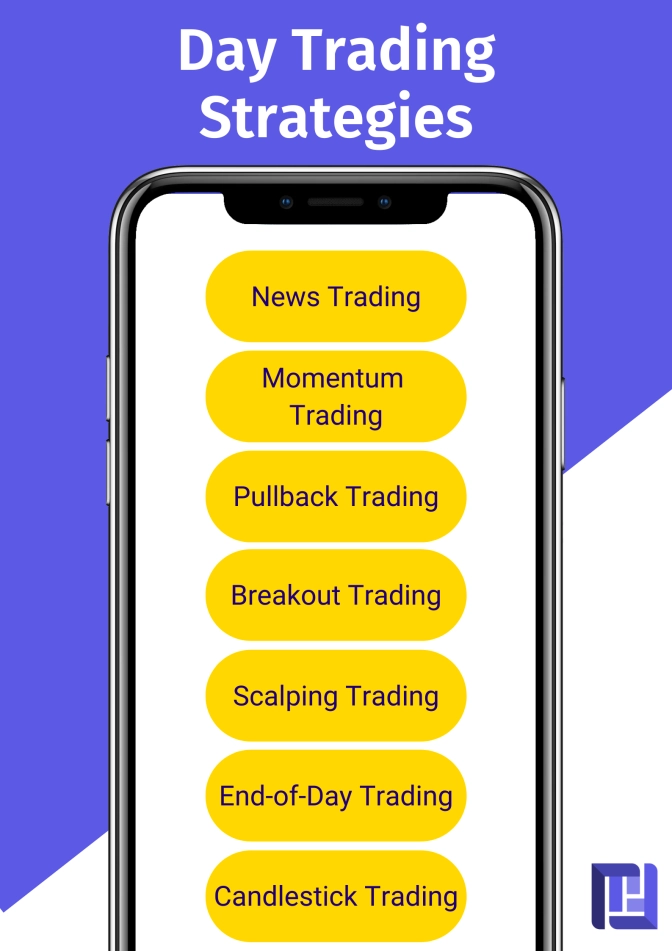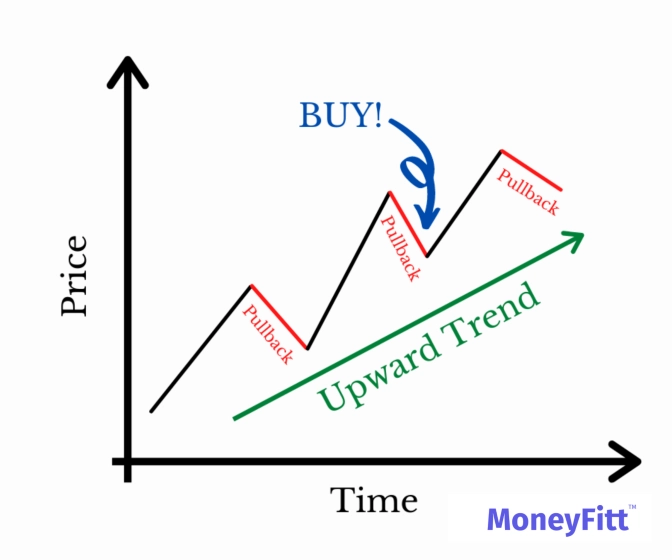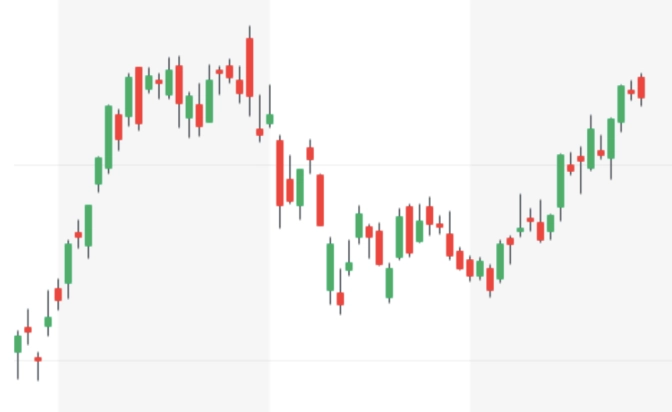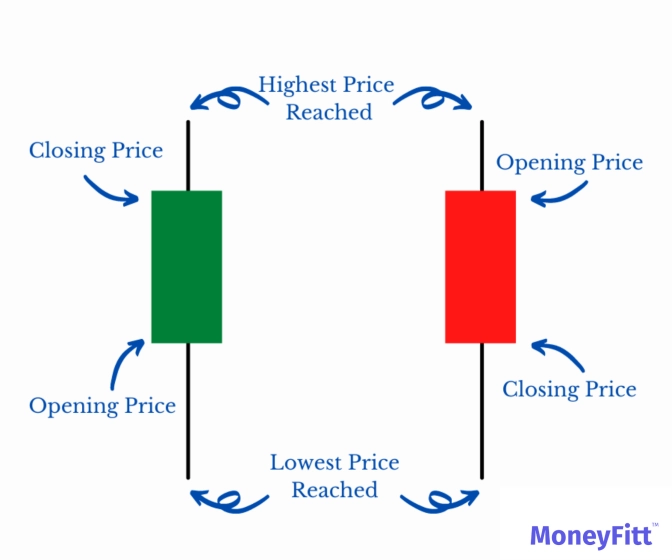Day Trading: What it is, How it Works, and Why it's Not Investing
“Professional” day trading can be a very lucrative career for a tiny fraction of those who try it. A very very tiny fraction.
- Day trading involves opening and closing your market positions within a single trading day, aiming to profit off intraday price changes.
- Day trading requires a time commitment, a wealth of knowledge, and sizeable starting capital.
- There are many different techniques and strategies that day traders use, each with its fair share of critics (but the main criticism is that most won’t work consistently for anyone, far less an amateur trader).
Often touted as a get-rich-quick scheme, day trading may be on many new investors’ minds. However, the reality is that day traders face an enormous amount of risk to reap any rewards. Many financial industry professionals don’t believe that the rewards justify the level of risk. Most compare day trading to gambling!
The profitability of day trading is a widely argued topic amongst financial experts. In the long run, most believe that active trading strategies will typically underperform a passive strategy due to all the trading and commission fees involved. Hence, the long-term likelihood of profitable day trading is low. There are success stories of “instantly-rich” day traders out there, but we urge our readers to understand that these occurrences are once in a blue moon (and many “successful” day traders often later give up those gains and more!)
Day trading requires steadfast commitment, a wealth of knowledge and a significant amount of starting capital. And a lot of luck as well. If you’re unsure if you should start, get a second opinion!
Undaunted? Or simply just curious? Well, read on to find out more!
How Does Day Trading Work?
Day trading is a simple concept (while making a profit from it is not). It involves buying and selling financial instruments within a single trading day, almost always using leverage.
By doing so, day traders aim to profit off what could be pretty small intraday price movements of financial assets. Note that this does not mean that day traders buy at the opening and sell at the closing prices of the financial instruments on that day. They choose when to enter and exit the positions during the trading day using various strategies, which we will highlight below.
What Do Traders Day Trade In?
Here are the most common instruments that day traders trade in:
- Stocks
- Options
- Foreign exchange (forex)
- Futures
- Cryptocurrencies
Unlike most other markets, the forex market is open 24 hours a day and hence provides unparalleled accessibility. Of course, this is a double-edged sword. Having a market open for 24 hours may mean that you may lose out on trading opportunities, and hence forex trading could take up more of your attention throughout the day.
Fun fact: public data has shown that 95% of forex traders in 2020 lost money or broke even, with (maybe not too surprisingly) 80% quitting within a year of starting their trading!
For more forex trading statistics, click here.
When picking a market to trade in, one needs to consider factors such as the span and depth of your knowledge and interest, your financial position and the market's trading hours. It is important to pick a market where you already have a strategy in mind. You should also consider that some strategies shared online may only be helpful in specific markets, conditions or times of the day. Beware that some may also have hidden agendas (e.g. "pump and dump").
Day Trading Is NOT Investing
There is a distinct difference between trading and investing. While traders aim to make profits in the short term through rapid buying and selling of financial assets on leverage, investors typically seek to make long-term profits by buying and holding financial assets.
That’s not to say that trading and investing are mutually exclusive as most day traders invest a part of their wealth as well. This is because investing serves an entirely different yet integral purpose in our lives: to prepare for our financial goals.
Gambling vs Speculative Trading vs Investing
The distinction between investing, speculative trading and gambling may not be clear-cut because luck plays a significant role in all three. Speculative trading and gambling also exhibit significant overlaps around addiction. A study conducted by Arthur JN and Delfabbro P in 2017 found 7.6% of day traders to have problematic gambling-related behaviours. Some experts also suggest that financial speculation should be considered a form of behavioural addiction in its own right and caution traders, more specifically day traders, to keep an eye on their habits.

What Are Some Common Day Trading Strategies?
Below are seven of the many strategies that day traders use when deciding when to buy or sell a financial asset, sometimes in combination with one another.

1. News Trading
Prices react quickly to the news. If a company announces retrenchment or releases an annual report with woeful financials, the stock price will usually start falling. Similarly, if a country seems to have political struggles or a riot breaks out, the forex market will probably have a field day. By keeping an eye on business news, day traders try to "predict" the short-term price movements, and maybe long-term ones, depending on the severity and impact of the situation.
All traders and investors need to keep an eye on the news. Much can affect market prices; you still need to pick up (or log onto) that newspaper!
2. Momentum Trading
This simply involves riding the observed wave. If you see the asset's price rising, you may expect it to continue rising, so you would take a long position (i.e. buy it). Likewise, if the price is falling, you’ll take a short position in the asset. Of course, just because the price is currently moving in one direction doesn’t mean that it’ll keep going after you take a position. The trick, of course, is to close your position before it turns. You need to be both intelligent and lucky with choosing the right time to ride a momentum trade.
These are some typical signs momentum traders look for before opening a position:
- A major move in price driven by a catalyst (from the news)
- Price movement of about 30% to 40%
- Moving averages (simple moving average or exponential moving average)
3. Pullback Trading
Prices don’t ever follow a straight line. When a price increases, it typically follows a wave motion, going up and down, but the ups go higher, creating an overall upward trend. These downs are known as pullbacks, or correction waves, that will occur throughout the upward trend. This is similar to a price decrease, where the downs will be larger in magnitude, and the ups will be the pullbacks.

Pullback trading involves looking for a financial asset that already has an established trend (i.e. already rising or already falling in price) and opening your position during the pullback to have a more optimal entry price. For example, if the price is on an upward trend, wait for a pullback to buy or add to a long position at a lower price. If the price is on a downward trend, wait for a "pullback" to sell or place a short position at the higher price.
In both an uptrend and a downtrend pullback, the key question is, "Is this the start of the turn?"
This strategy is usually used hand in hand with momentum trading.
4. Breakout Trading
Another technical (or chartist) indicator. To understand the concept of a breakout, you must first understand the concept of resistance and support lines. There may be a certain price in any given timeframe where the market price never tends to go beyond or under. This price is known as the resistance or the support, respectively.

If the price exceeds the resistance by a significant amount, that is considered a breakout and breakout traders will begin taking a long position. Similarly, if the support line is broken and the price drops below by a significant amount, that is considered a breakout and breakout traders will take a short position.
5. Scalping Trading
This strategy encourages you to close your position the moment you can make a profit. This reduces the risk of the position reversing and making a loss. Of course, this is no guarantee, and a disciplined stop-loss strategy is still essential. The concept behind this is simple: many small wins make a big win, despite the numerous fees that you will incur with the multiple trades. Note that each trade may last only a few minutes or even seconds. Hence, only quick-thinking, attentive, and disciplined traders should take on this strategy.
6. End-Of-Day Trading
Some traders only trade near the closing hours of the market. This is because when the market is going to close, volumes are typically higher due to many traders wanting to close their positions. Hence, prices can be more volatile during this period than the rest of the day, making it less time-consuming as it "frees up" the rest of the day. The danger then comes in also having to close this position before the end of the trading day!
7. Candlestick Patterns Trading
Candlesticks refer to one of the more popular graphs that traders use when studying price movement. Instead of simple line graphs, candlestick graphs give more information, such as the opening and closing prices of a single time interval and the highest and lowest prices reached in that interval.

If the interval is set to 1 minute, each candlestick will indicate a 1-minute time frame. A green candlestick indicates an overall price increase in a specific time frame, while a red indicates a price decrease.
The candlestick box shows the opening and closing prices of that time frame. For a green candlestick, the bottom of the box is the opening price, and the top is the closing price (hence, a price increase in that interval). For a red candlestick, the top of the box is the opening price while the bottom is the closing price (hence, a price decrease).
The end of the stick at the top of the box shows the highest price reached in the time frame, while the end at the bottom represents the lowest price reached.

Each of these trading methods has its fair share of supporters and critics. It is up to you as a trader to determine which best suits your trading style and which produces, on balance, the best results.

Can Day Trading Be a Profession?
While some people may do day trading on the side or in between jobs, some traders do day trading as a career! There are two types: institutional traders (paid occupation) and independent day traders (self-employed).
You probably can't even think of institutional traders as day traders described earlier. Financial institutions hire them to execute orders for accounts such as unit trusts or the proprietary funds of the institution itself (the fabled "prop book"). Some institutional traders may practice day trading, but that depends on the trading objectives of that particular fund.
Tips for Day Trading
1. Read Up
You need to keep up with the latest business and market news and events that may or may not affect asset prices. If you’re eyeing shares, make sure to read up and keep up with the company, its subsidiaries, the industry and the countries the company is in, amongst many other things.
2. Set Aside Time and Money
Day trading will take up a bulk of your time and effort, which is why it’s a full-time job for many who do it. You also require significant starting capital to start as an independent day trader. Many successful day traders only allocate 1% to 2% of their account for each trade opened since the entire initial sum in each trade may be easily wiped out depending on the amount of leverage used!
3. Make Use of Automated Orders
If you’re a day trader, you’re likely using online brokerage platforms. As such, you can use the various types of orders available. Here are some of the commonly used ones that you may find on your trading platforms:
- Stop-Loss Order: set a level below the current market price to automatically sell your holdings. This will cap your losses in case the price continues falling instead of bouncing back up.
- Buy Limit Order: set a level below the current market price below which you will automatically buy the asset. You use this when you expect the price to rise but don't want to keep buying and only wish to participate at lower levels.
4. Start With a Trading Simulator
Most online brokerage platforms have trading simulators or demo accounts. These use real-time prices, but you’re using an account with "fake" money to trade. It’s like a trial to see if you could do well as a day trader without risking anything (or gaining anything) except your confidence! After all, these brokers do want to make money off your actual money trades.
The Psychology of Trading
An important aspect of day trading, or any trading, is to keep your emotions in check. Traders often have to make snap decisions when selecting trades and the timing of trades, so they need to be in a logical state of mind that represses fear and greed. Fear and greed are two of the strongest emotions that drive investors to make irrational decisions. The third, in our opinion, is ego, a nasty one that male investors in particular struggle with.
Fear of potential losses may cause investors to be more averse to risk and limit their potential earnings. Investors may also become stressed if their positions are loss-making, making reckless decisions out of fear and frustration.
Greed for higher earnings may cause investors to take on higher levels of risk that they are not prepared to handle (such as leveraged financial derivatives) or delay closing a profitable position.
DAY TRADING. COMPLETED. ✅
Sources:
- https://www.investopedia.com/articles/trading/05/011705.asp
- https://www.ig.com/sg/trading-strategies/beginners-guide-to-day-trading-39692-170905
- https://www.investopedia.com/ask/answers/12/difference-investing-trading.asp
- https://www.cmcmarkets.com/en/trading-guides/trading-strategies
- https://www.gobankingrates.com/investing/stocks/day-trading-strategies/
- https://www.taxprofessionals.com/articles/day-traders-the-difference-between-an-institutional-and-retail-day-traders-4473
- https://www.investopedia.com/trading/introduction-to-momentum-trading/
- https://tradeciety.com/5-pullback-trading-strategies-and-how-to-trade-pullbacks/
- https://www.forex.in.rs/why-traders-lose-money-in-forex/
- https://www.forex.in.rs/forex-trading-statistics/
- https://www.investopedia.com/articles/trading/02/110502.asp
- https://www.forbes.com/sites/brettsteenbarger/2020/05/26/can-meditation-make-us-better-traders-and-investors/?sh=1d4acb606ff2
- https://www.forbes.com/sites/brettsteenbarger/2020/05/26/can-meditation-make-us-better-traders-and-investors/?sh=1d4acb606ff2
- https://blogs.cfainstitute.org/investor/2021/05/24/women-and-investing-five-myths/
- https://www.ncbi.nlm.nih.gov/pmc/articles/PMC5370364/
